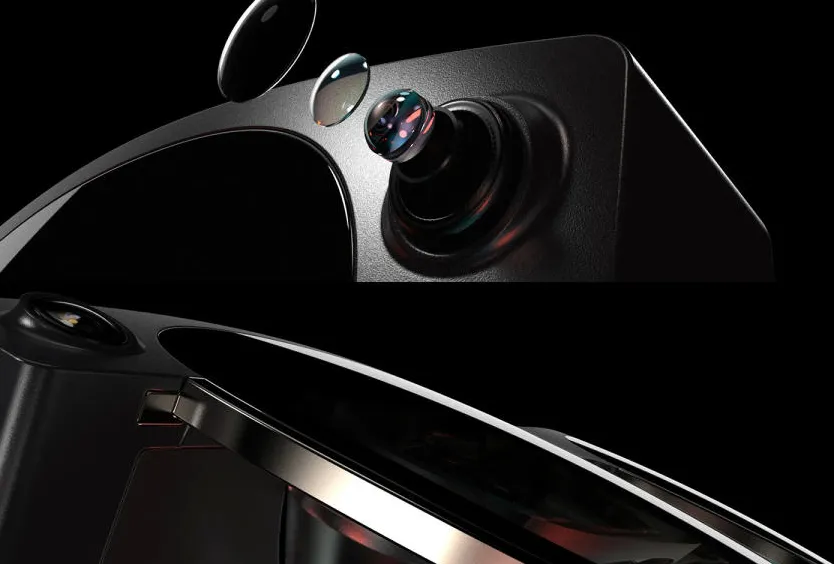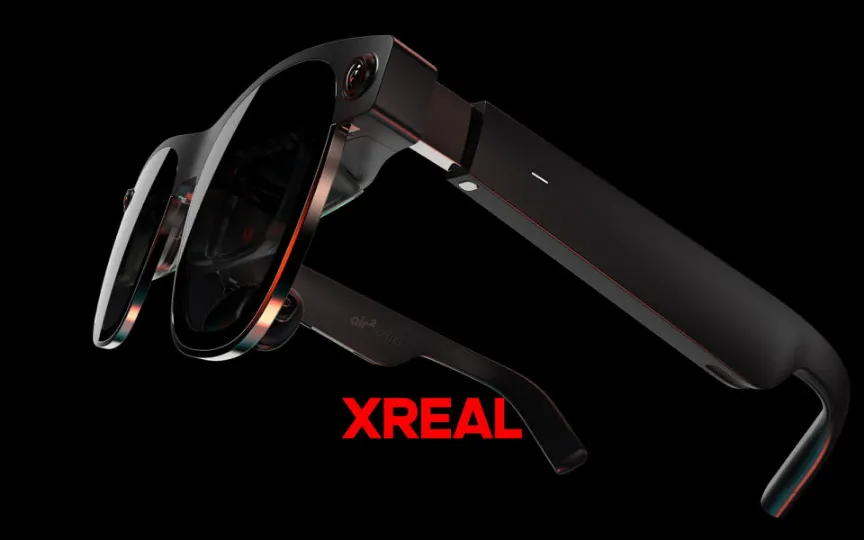Xreal Air 2 Ultra emerges as a cost-effective option to Apple Vision Pro, reportedly.
Xreal, previously known as Nreal, had a highly popular booth at CES recently, so it’s not surprising that they are returning with new AR glasses for CES 2024, especially with the highly anticipated launch of Apple’s Vision Pro. After the release of the Nreal Light in 2019, the brand new Xreal Air 2 Ultra now includes 6DoF spatial tracking and hand tracking, along with a wider 52-degree field of view and a sharpness of 42 pixels per degree, all within a lightweight 80-gram titanium package. The company even claims that these specifications make the $699 Air 2 Ultra a compelling alternative to the $3,499 Vision Pro.
Unlike stand-alone mixed reality headsets, the Air 2 series glasses need to be powered by an external computing unit, such as a smartphone, computer or Xreal’s Beam module, via USB-C. While the previous Air 2 Pro and Air 2 were positioned more as wearable personal display devices, the Air 2 Ultra highlights its 6DoF spatial computing capabilities, meaning that virtual objects can be mapped onto the real world as you walk.
This is made possible by the two front 3D environmental sensors and the Qualcomm Snapdragon processors in the Samsung Galaxy S23 or S22, iPhone 15 or any Mac or Windows machine that can use Xreal’s Nebula launcher. If you already have an Xreal Beam, you can also plug in the Air 2 Ultra to get a 3DoF (read: head-only tracking) experience with video playback or console gaming. Oddly enough, the company isn’t planning to support more smartphones right now, but it is preparing a new custom computing unit with the Air 2 Ultra at some point.

Like the Pro, the Air 2 Ultra’s front layer supports three levels of electrochromatic dimming for increased immersion (without physical protection), as well as directional sound technology for privacy and dual microphones for voice interaction. You’ll find the same old Sony micro OLED panels with 1080p resolution per eye, a refresh rate of up to 120Hz (90Hz in 3D mode) and a brightness of up to 500 nits (250 nits in 3D mode). Xreal added that these glasses can transmit a virtual 2D display “equivalent to 154 inches from a distance of 13 feet” and that they are “TÜV Rheinland certified for color accuracy, eye comfort, low blue light and flicker-free operation.”
The $699 Xreal Air 2 Ultra is available for pre-order now, and if you bought the Nreal Light a while back, you’re likely eligible for a $100 discount. That’s still not quite as aggressive as the Meta Quest 3’s $500 base price, but then again, the Air 2 Ultra is largely aimed at developers so far. First, Xreal’s upcoming Unity-based NRSDK 2.2 won’t be available until these glasses start shipping in March. Only then can developers take advantage of improved hand tracking, hand gesture recognition, spatial anchors, the depth network, and more. In other words, Xreal needs to win over as many developers as possible to build its mixed-reality ecosystem before it gets any attention from consumers at all, if not from businesses — the latter has happened to HTC, which announced that it was sending a VR headset to the International Space Station back in November.




